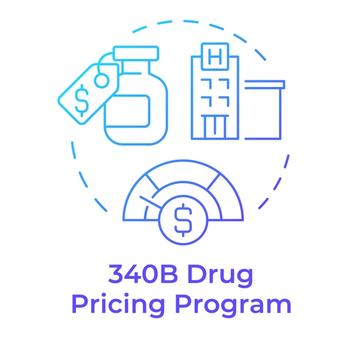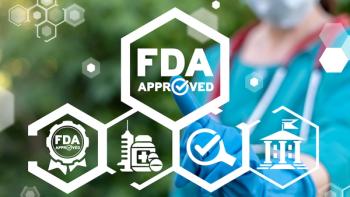
FDA extends approval for Vyvanse to treat adult ADHD
FDA has approved lisdexamfetamine dimesylate (Vyvanse, Shire) capsules, (CII) as a maintenance treatment for adults with ADHD. Vyvanse was already approved as a treatment for ADHD in patients aged 6 to 17 years.
FDA has approved lisdexamfetamine dimesylate (
The new approved indication is based on results from a randomized withdrawal study designed to evaluate the efficacy of Vyvanse in adults (aged 18 to 55 years) who were receiving treatment with Vyvanse for a minimum of 6 months prior to enrolling in the study. Significantly more patients treated with Vyvanse maintained ADHD symptom control compared with placebo as determined by the proportion of patients who met criteria for relapse of symptoms at end point during the 6-week randomized double-blind withdrawal phase of the study (8.9% of Vyvanse-treated patients vs 75% for placebo).
Vyvanse should be used as part of a total treatment program that may include counseling or other therapies. The physician who elects to use Vyvanse for extended periods should periodically reevaluate the long-term usefulness of the drug for the individual patient.
In a randomized withdrawal design, patients who respond to a treatment are randomly assigned to continue receiving that treatment or placebo. Utilizing the proportion of patients experiencing symptom relapse as a primary outcome, this type of study in patients with ADHD can be used to demonstrate long-term efficacy in lieu of conducting a long-term, placebo-controlled, parallel-group study. The utility of this design is that the period of placebo exposure, with the potential for worsening of ADHD symptoms, is relatively short.
“Data from this study and the resulting approval illustrate that Vyvanse can help adults with ADHD maintain symptom control. Vyvanse is the first medicine both proven to work and approved to maintain efficacy in adults with ADHD,” said Jeffrey Jonas, MD, senior vice president of Research and Development for Shire’s Specialty Pharmaceuticals and Regenerative Medicine businesses, in a company press release.
This phase 4, double-blind, multicenter, placebo-controlled, randomized withdrawal design study assessed the maintenance of efficacy and safety of Vyvanse in 123 adults who met DSM-IV-TR criteria for ADHD. Prior to enrollment, patients were required to have documented long-term treatment with Vyvanse (30, 50, or 70 mg/day) for at least 6 months and demonstrated treatment response as defined by an ADHD Rating Scale IV (ADHD-RS-IV) with adult prompts total score of
After screening, eligible patients entered a 3-week open-label treatment phase in which they continued to receive the same Vyvanse dose they were taking at study entry. Following this open-label treatment, patients who maintained treatment response at week 3 entered the 6-week double-blind, randomized withdrawal phase (n=116), in which they received on-going treatment with the same dose of Vyvanse (n=56), or switched to placebo (n=60). The ADHD-RS-IV with adult prompts is a clinician assessment of the severity of the core symptoms of ADHD. The CGI-S is a clinician assessment of symptom severity.
The primary efficacy outcome measure was the proportion of patients who met criteria for relapse of ADHD symptoms at end point during the double-blind, randomized withdrawal phase. End point was defined as the last post-randomization treatment week at which a valid ADHD-RS with adult prompts total score and CGI-S were observed. Relapse of ADHD symptoms was defined as a ≥50% increase (worsening) in the ADHD-RS-IV with adult prompts total score and a ≥2-point increase in the CGI-S score compared to scores at entry into the double-blind randomized withdrawal phase. Patients who met criteria for relapse of ADHD symptoms were immediately discontinued from the study.
On the primary efficacy measure, significantly fewer patients met criteria for symptom relapse with Vyvanse (8.9%) versus placebo (75%) (P
During the open-label phase, 7 patients discontinued from the study, including 1 patient on Vyvanse who discontinued due to a treatment-emergent adverse event (TEAE) (lack of efficacy).
One serious adverse event (SAE) was reported during the randomized withdrawal phase in a patient receiving placebo (suicidal ideation). No SAEs were reported in patients receiving Vyvanse, and no deaths were reported. During the randomized withdrawal phase, 48.2% (27/56) of patients receiving Vyvanse and 30% (18/60) on placebo reported TEAEs. The most common (≥2%) TEAEs reported in the Vyvanse treatment group included headache, upper respiratory tract infection, insomnia, fatigue and joint sprain. Mean systolic and diastolic blood pressure and pulse rate were slightly higher for Vyvanse-treated patients compared to placebo-treated patients. Small changes in mean blood pressure and pulse rate were observed from baseline to week 3 in the open-label phase and at end point of the randomized withdrawal phase for both Vyvanse and placebo treatment groups. The safety profile seen in this study was consistent with that of other studies of Vyvanse. No new clinically relevant safety signals were associated with abrupt discontinuation of Vyvanse.
"The finding from this study is important because adult patients with ADHD may have a need for extended treatment, and could benefit from a treatment option proven to maintain efficacy,” said Matthew Brams, MD, principal investigator and clinical assistant professor of psychiatry at Baylor College of Medicine, in a company press release. “This study showed that in patients with ADHD who were stable on Vyvanse for 6 months, 91% randomized to receive Vyvanse continued to maintain symptom control compared with 25% taking placebo.”
Newsletter
Get the latest industry news, event updates, and more from Managed healthcare Executive.





















































